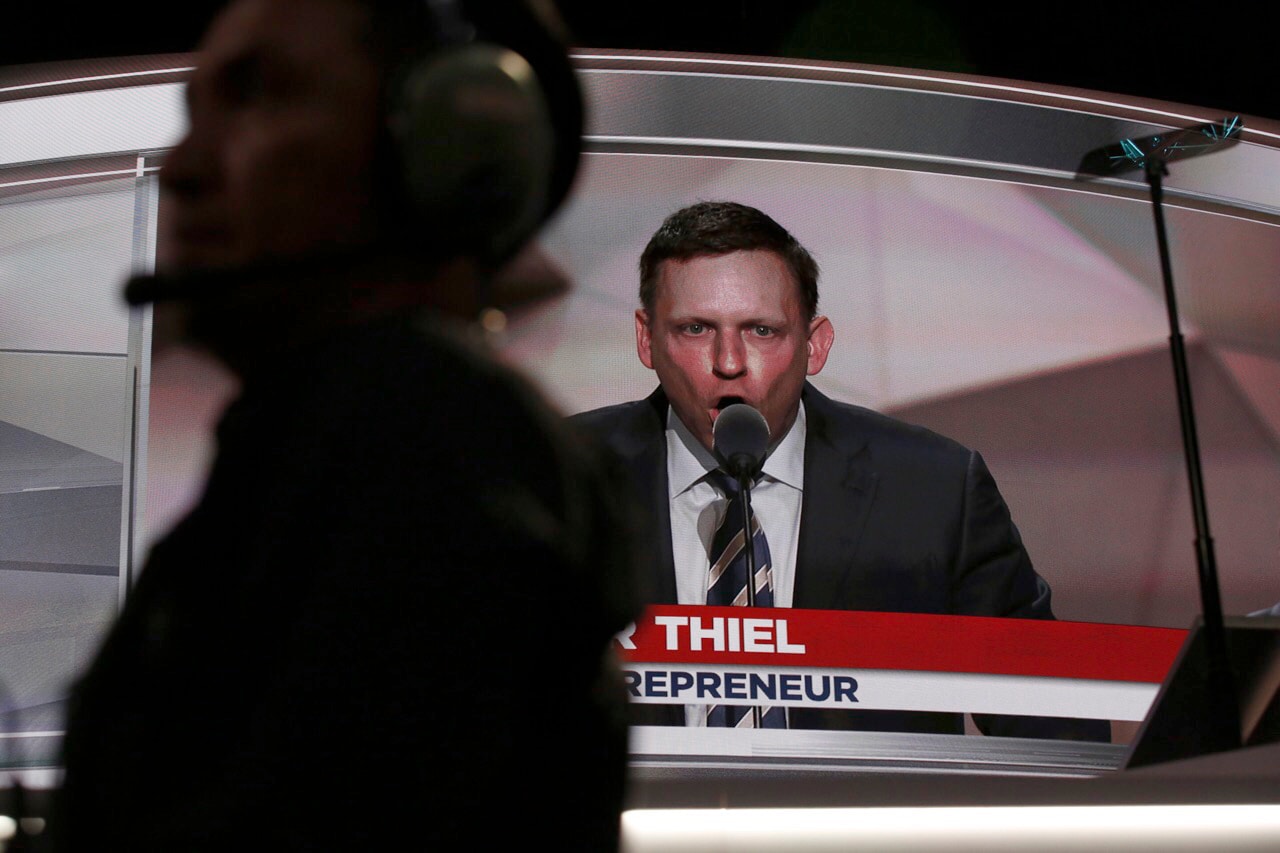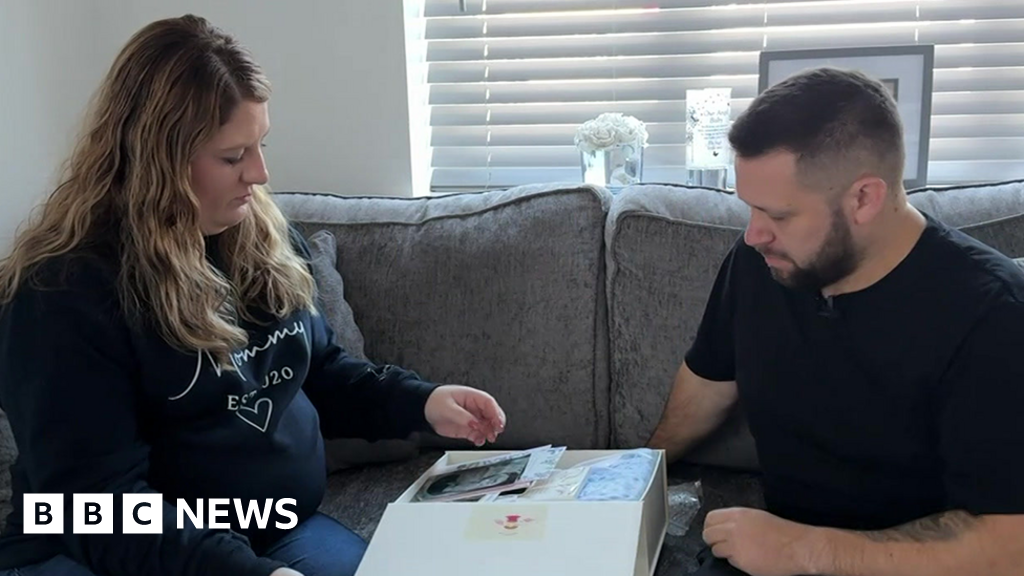
Inside the powerful Peter Thiel tech network that launched JD Vance
- Science
- July 28, 2024
- No Comment
- 113
Vance’s most forceful Silicon Valley advocates are euphoric about the former never Trumper’s rise in the GOP. They see Vance as their emissary in Washington, spreading a doctrine that government and entrenched corporate giants from Google to Lockheed Martin stifle innovation, while nimble, bold-thinking start-ups — especially their own — can propel the national interest. And while the ascension of Vice President Harris has invigorated many left-leaning tech leaders, some in Thiel’s network would stand to benefit from having Vance in the White House — a new asset for venture capitalists who until recently shunned Washington.
“WE HAVE A FORMER TECH VC IN THE WHITE HOUSE GREATEST COUNTRY ON EARTH BABY,” Delian Asparouhov, a partner at Thiel’s Founder’s Fund, wrote on X after the announcement of Vance’s nomination.
For Thiel, Vance’s presence on the ticket is the payoff on a prescient bet placed a decade ago, when he embraced the Yale Law School graduate with Rust Belt roots as his protégé — joining a roster that included Meta CEO Mark Zuckerberg and OpenAI founder Sam Altman.
Especially after the publication in 2016 of his memoir “Hillbilly Elegy,” Vance impressed Thiel’s rarefied Silicon Valley set with what they saw as an omnivorous intellect, mild manner and outsider story of growing up working-class in Ohio — a narrative that resonated after the 2016 election, as tech elites sought to understand how their obsession with building the future was leaving so many Americans behind.
Thiel made him wealthy, setting him up to invest in companies that became popular with the MAGA set. He shepherded Vance’s entry into politics, bankrolling, alongside other Silicon Valley donors, his successful bid for the U.S. Senate in 2022.
“For Peter,” said one of the people familiar with his thinking, “Vance is a generational bet.”
But Vance’s connections in the business world — along with his stances on social issues such as abortion and gay marriage — have also opened him up to criticism. Critics have called him a “shillbilly,” arguing that his relationship to the Thiel network could become a pay-to-play scenario.
“The best way for them to [instate] their elitist scheme and reactionary views is regulatory capture,” investor Del Johnson posted on X, using a term to describe the private sector’s control of the regulatory process. “You haven’t seen anything yet if you let the VC class get into the presidency.”
This report is based on 17 interviews with people familiar with Vance’s rise in the Valley, his relationship with Thiel, and the tech world’s ambitions for him should he win the country’s second highest political office, many of whom spoke on the condition of anonymity to protect their relationships.
Thiel declined to comment. Vance did not respond to comment requests.
Though Thiel became a Trump megadonor during the 2016 campaign, he ultimately was disappointed by the disorganization of his administration, as well as the lack of focus on science and innovation, according to several people with knowledge of his thinking.
But the Vance pick is helping Thiel warm to Trump. And Trump’s selection coincides with a newly sharpened focus on issues of central importance to the tech world. The former president has embraced industry-friendly messages on electric vehicles, cryptocurrency, and artificial intelligence. Trump appeared last month on Sacks’ All-In podcast, where he called his Silicon Valley donors “geniuses.” And at this month’s Republican National Convention, he praised electric vehicle pioneer Elon Musk, saying, “We have to make life good for our smart people.”
Sacks hosted Trump and Vance at his San Francisco home for a pricey fundraiser in June, where the pair met more than 50 technology executives and other wealthy donors, according to a list of attendees reviewed by The Washington Post.
At the RNC, Sacks could be seen talking with Vance in Trump’s private box. Others present said they had never seen the event so flooded with donors, lobbyists and others from the technology industry.
The Biden administration, by contrast, has infuriated tech leaders by hindering the crypto industry, attempting to regulate AI and challenging corporate acquisitions — a key path for start-up founders to cash in. Sacks, Musk, Palantir co-founder Joe Lonsdale, Sequoia Capital’s Doug Leone, and founders of the prominent venture capital firm Andreessen Horowitz have all thrown in with Trump and are donating large sums to a pro-Trump PAC.
If Trump reclaims the White House, Vance could help transform the tech industry from political punching bag to engine of capitalism, filling government positions with ideologically-aligned tech leaders. A web of Thiel-associated start-ups, including Vance’s own token investment in defense start-up Anduril, are competing for billions in contracts.
Meanwhile, friends of Sacks — whose pitch to Trump on nominating Vance was about noninterventionist foreign policy — often joke that he is angling for Secretary of State.
Vance’s supporters said his willingness to call out Big Tech’s monopolistic practices, while supporting more nimble start-ups — branded “Little Tech” — make Vance a persuasive envoy.
Blake Masters, a former senior executive with Thiel Capital who is running for Congress in Arizona, said Vance’s ties to Silicon Valley would help usher in a new era of innovation.
“It’s not about making a buck,” said Masters, who became friends with Vance after Thiel asked him to review the billionaire’s blurb for “Hillbilly Elegy.” “It’s about making new technologies that the government, which used to do big initiatives like the Manhattan Project, is no longer equipped to make. It’s like someone who actually understands, almost at an intuitive level, the problems coming down the pike.”
‘Someone we want in our network’
Two months before Trump was elected, Vance attended a salon dinner in San Francisco with some of the wealthiest and most powerful people in tech. The attendees, which included Thiel, Andreessen, Altman, Salesforce CEO Marc Benioff, and Jon Levin, then a dean at Stanford Business School, had gathered to discuss a newly relevant topic: “The difficulties of working class America and the future of work.”
The wide-ranging conversation quickly turned to politics. Though a never-Trumper at the time, the young memoirist translated the populist rage that had propelled Trump’s long-shot campaign along with that of democratic socialist Sen. Bernie Sanders (I-Vt.)
“Everyone there was trying to understand that moment,” said a person familiar with the evening, who spoke on the condition of anonymity because it was a private gathering. The then-32-year-old “held his own with these incredible intellects … he commanded the respect of everybody in the room.”
Thiel paved the way for Vance around a decade ago, after Vance emailed the billionaire about exploring opportunities in Silicon Valley. He was inspired by a 2011 speech Thiel had given at Yale Law School, a talk lamenting technological stagnation and arguing that the elite obsession with hypercompetitive jobs was crushing innovation. Vance described the address as “the most significant moment” of his time at Yale.
Vance made an impression on Thiel, said Colin Greenspon, a former managing director at Mithril, a Thiel investment firm.
“We knew this guy is someone we one hundred percent want in our network,” said Greenspon, who would go on to co-found the venture firm Narya with Vance. “The benefit of that Peter Thiel world is that there is always someone interesting coming and going, and JD was someone we knew we wanted to stay close to.”
An associate of Thiel helped Vance get a job at the biotechnology company Circuit Therapeutics. Though Vance knew nothing about optogenetics, the company’s specialty, he was a rigorous student. He soon approached Mithril about investing in the start-up.
Mithril passed. But Vance’s approach — a “knack for checking in at the right time” — so impressed Greenspon that the group concluded “we needed to hire him.”
Joining Mithril in 2016, Vance absorbed how investors evaluate companies, swept up in a milieu where technological innovation was revered as the engine of social progress. The man from Middletown, Ohio, who wrote in his memoir that he didn’t know there was more than one kind of white wine, attended dinners with billionaires. Katherine Boyle, a venture capitalist who now helps start-ups work with governments, threw him a book party with pizza at her San Francisco apartment.
Though pundits were already calling “Hillbilly Elegy” a campaign book, Vance rarely spoke of his political ambitions in Washington-skeptical Silicon Valley.
“He didn’t seem like somebody who was trying to get the limelight,” said Auren Hoffman, CEO of the start-up SafeGraph, who became friends with Vance after organizing the 2016 salon dinner to introduce him to his social set. “I didn’t know his politics.”
Others saw Vance as more calculating. One person who socialized with Thiel’s circle said Vance made no effort to get to know people with similar backgrounds, gravitating instead toward influential people who could help his career.
“Vance does seem to fit the mold of scrappy, Horatio Alger-type bootstrap-pulling White male founder that attracts a lot of attention in Silicon Valley,” said Ellen Pao, former investor at Kleiner Perkins and a co-founder of the nonprofit Project Include, who noted that she did not know Vance. Pao wondered whether “his success is tied to his willingness to shift with the wind — malleability that can be helpful if you’re looking for government assistance in getting the start-ups you fund off the ground.”
A year after joining Mithril, Vance went back to Ohio. In a 2017 New York Times editorial called “Why I’m moving home,” he described his time in Silicon Valley — “surrounded by other highly educated transplants” — as “jarring.” In another interview, he seemingly snubbed elite tech crowds, saying that people on the West Coast “wield political-financial power in combination with a certain condescension.”
Days after the editorial, Vance also announced that he had a new job: working with AOL co-founder Steve Case, an independent who had endorsed Hillary Clinton in the previous election, on Rise of the Rest, an initiative focused on developing start-up talent outside of coastal tech capitals.
In 2018, Vance boarded a luxury bus in Youngstown, Ohio, to participate in a similar effort organized by politicians, the Comeback Cities Tour. Surrounded by vegan doughnuts, kombucha, and West Coast venture capitalists, Vance described the local start-up scene and the region’s challenges because of the opioid crisis. Vance had spent much of his adult life far from the declining steel town, but the visitors viewed him as an ambassador well-positioned to close the gulf between their sleek San Francisco offices and Ohio.
“What people realized … with meeting JD in this context is that Silicon Valley is full of smart people, but not all the smart people are in Silicon Valley,” said Patrick McKenna, one of the investors on the bus.
The next year, Greenspon and Vance started their own Ohio-based fund, Narya, named after a ring of fire in “The Lord of the Rings.” (Thiel’s Mithril and Palantir also drew their names from the J.R.R. Tolkien epic). Thiel stayed closely involved, providing at least 15 percent of the capital.
Vance told potential backers Silicon Valley was “oversaturated” with copycat, flavor-of-the-moment companies like “Uber for parking.” Vance said Narya would focus on sourcing big ideas and “deep technologies” such as robotics and biotech. (AI and crypto were overhyped, he said at the time.)
Not all of its investments paid off. Narya Capital led a $28 million investment in the agriculture start-up AppHarvest, which filed for bankruptcy last year.
An early investor who bought into the “deep tech” pitch was surprised by what the investor considered to be ideologically driven bets by the firm, according to one person, who spoke on the condition of anonymity because they were not authorized to publicly discuss the investment.
The firm, along with Thiel, became a large investor in Rumble, a YouTube competitor that is popular with right-leaning audiences. Narya and Thiel also funded a Catholic prayer app, Hallow.
A Narya meeting in 2021 featured Ohio Lt. Gov. Jon Allen Husted (R) and Vivek Ramaswamy, at the time a former pharmaceutical executive and author of a popular book attacking “woke” capitalism. Hallow’s founder talked about politics and religion in a session dedicated to “taboo dinner topics.”
Narya co-founder Greenspon said the firm’s objective is “generating the best possible returns for our investors.”
By the time he announced his Ohio Senate run in 2021, Vance had transformed from Never Trump into a MAGA Republican — the result of years of conversations with Thiel, Masters, and others.
Masters said he and Vance spoke by phone in 2021, the day longtime Ohio Sen. Rob Portman (R) announced his retirement. “I immediately called JD, and was like, dude, I think you need to run in Ohio … We both felt like we needed to leave our business careers for this.”
During the 2022 midterms, Thiel injected more than $30 million into the candidacies of both his protégés, his largest donations ever and his only major donations that cycle.
One bet lost. The other would surpass his expectations.
One of their own
Vance is the first prominent tech venture capitalist to win a spot on a major party presidential ticket, a sign of the industry’s growing influence.
Though Silicon Valley was built on government support stretching back to the 1950s, its leaders have eschewed Washington — and defense contracts in particular — in recent decades. But since the pandemic, as financial returns have fallen and China and global instability have become bigger threats, the government has become a sought-after customer.
Vance, who has championed breaking up Google while advocating for a hands-off approach to nascent technologies like cryptocurrency, is widely seen within tech as one of the few politicians who understands that Silicon Valley doesn’t lobby as a monolith.
If Vance wins the vice presidency, “Little Tech and Medium Tech is going to have someone there,” said Evan Swarztrauber, a senior fellow at the Foundation for American Innovation, who previously worked for Trump’s Federal Communications Commission Chair Ajit Pai. The debate is “so dominated by the largest players.”
Several prominent “little” and “medium” defense tech companies happen to be funded by players in Thiel’s tightly-knit orbit: Anduril, which aims to infuse artificial intelligence into U.S. weapons systems, is backed by Thiel’s network, Andreessen, and is co-founded by Vance-donor Palmer Luckey. Palantir is represented by Helberg and co-founded by Thiel and Lonsdale, an investor and Vance and Musk friend who helped rally Silicon Valley players to donate to a pro-Trump PAC. Asparouhov, Thiel’s Founder’s Fund partner who posted euphonically about Vance, is a co-founder of Varda Space Industries, which is also pushing for government cash.
On a recent episode of All-In, co-host Jason Calacanis teased Sacks for criticizing Democrats for being captive to donors and called him the “architect” of the Vance pick.
Sacks, in the podcast, downplayed his involvement. “I was probably one of a thousand people, or at least hundreds of people,” he said, “who offered my opinion [to Trump.]”
correction
A previous version of this article said Vance was the first venture capitalist on a major party ticket. Mitt Romney’s Bain Capital made VC investments when it was first founded. In addition, a previous version of this article misidentified investor Steve Case as a Democrat. He is a registered independent who opposed Trump in 2016. The article has been corrected.
#powerful #Peter #Thiel #tech #network #launched #Vance









